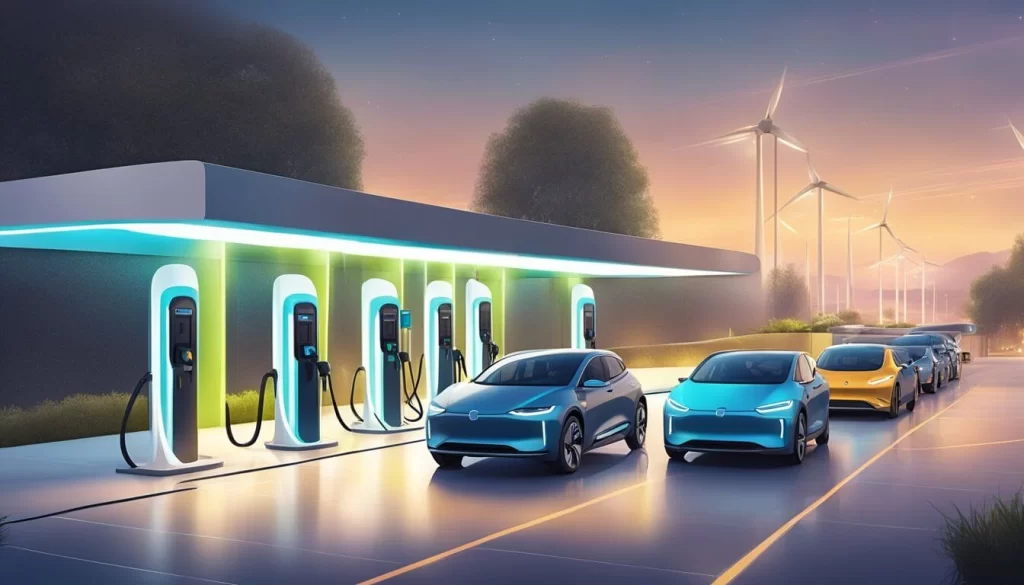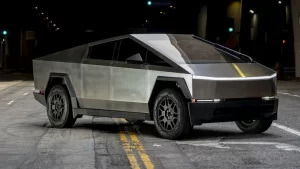Electric Vehicles: Paving the Way for the Future of Transportation

The era of electric vehicles (EVs) is here. Modern motors will soon be coming to a road near you! Ongoing environmental concerns, recent technological innovations, and the urgent need for alternative, safe, and sustainable fuel options are propelling the widespread adoption of EVs. Pollution is a pressing concern in both developed and developing nations. Individuals are becoming increasingly aware of the climate change and ecological damage caused by fossil fuel emissions. Governments have also taken significant steps to phase out oil-guzzling transport methods. This has led to the manufacture and sale of novel modes of transport, such as EVs, that reduce greenhouse gas emissions and create a new sustainable way of mobility. Moreover, with the growing population and consequential use of transport, it is imperative that we explore innovative methods to effectively address complex issues related to urban infrastructures and fluid commuting arrangements. Consequently, EV technology is surging ahead. In this article we will examine the future of EVs in terms of environmental implications, technological innovations, market trends, infrastructural developments, economic benefits and policy support.
Environmental Impact of Electric Vehicles
EVs have lower greenhouse gas emissions at the tailpipe than internal combustion engine vehicles. They provide cleaner air at the tailpipe, meaning that there is very little exhaust visible from the tailpipe of an EV, compared with a fossil-fuel vehicle, which emits what looks like ‘smoke’. This is particularly important in areas that are highly populated because it leads to cleaner air. This reduction of pollutants from the atmosphere also acts to mitigate climate change by reducing the footprint of the transportation sector.
Most concern about the environmental impact of EVs has revolved around the production and disposal of their batteries. In fact, technologies for building EV batteries and disposing of them are improving to the point that the impact is reduced. Battery technology continues to advance, making them more efficient, and therefore reducing the size of the battery. This can extend the life, or range, of the vehicle, and improve recyclability – although EV batteries could still be designed to be more recyclable. But what about recharging EVs? In countries with high levels of solar, wind and hydroelectric power, the electricity used to recharge EVs can be generated with a negligible cost to the environment. This makes EVs not just a practical solution for transport, but one that has maximum environmental benefit throughout its whole lifecycle.
Secondly, the substitution of EVs would ultimately bring about lower noise pollution in the city. Compared with internal combustion engines, an electric motor is much quieter, so the overall noise pollution in the city would be lower, which provides a much better quality of life in the city. If the noise pollution is drastically decreased, the huge space repression would not have to be implemented. It would help make the city more attractive. Lower emission, cleaner production processes and lower noise pollution, that’s what you can get from an EV. No wonder why it is one of the first steps in creating a more sustainable future.
Technological Advancements in Electric Vehicles
Technological innovation is driving improvements in performance, efficiency, and user experience. The most promising area for technological development in the EV revolution is batteries. Battery innovations are responsible for the increased energy density and power, leading to longer range and even faster-charging times. Thanks to lithium-ion batteries currently numbering among the best EV batteries, though research and development continues to push battery standards ever higher, and it is not inconceivable that solid-state batteries could double range and half battery charge times, slashing the time needed to fill up even further.
Similarly, as had been the case with cabin comfort, autonomous driving is becoming a feature of electric driving. Many EV suppliers are exploring tighter integration between their cars and auxiliary driver-assistance systems (ADAS) and autonomous features. This will increase safety, reduce accidents and offer a more relaxing experience for the driver. Lane-keeping assistance, adaptive cruise control and self-parking are now standard features on many EVs that are pushing the envelope of what a car can do for itself.
It is also a source of connectivity. Take modern electric vehicles. ‘Auto manufacturers increasingly provide so-called embedded infotainment systems and mobile connectivity, allowing drivers to control select features like climate control remotely, as well as receiving vehicular alerts regarding traffic and weather conditions,’ wrote Massimo Marinelli, a research fellow at the University of Southampton in the UK, and a group leader at the Fraunhofer Institute for Open Communication Systems in Rostock, Germany, in a recent paper. ‘Effectively, smarter technology and IoT functionality can be embedded into EVs and make them more connected, intelligent machines to support not only the shifting driving experience, but also with new possibilities of connecting electric vehicles (EVs) to the power grid to allow for vehicular-to-grid (V2G) technology.’
Market Trends and Consumer Adoption
All around the world we can see the market of electric vehicules increase rapidly. Although, some nations have been an advantage compared to others to adopt to the electric vehciles, some nations have just gotten into the exloring world and are now beginning to see their population using electric vehicules more regular than ever. There are many factors leading to the increasing rate of EV usage: People are becoming more aware of the ecological benefits of electrical vehicles and also the saving of money over the longer term. Moreover, due to the fact that today’s electric vehicles are cheaper and more powerful than ever before more people, decide to make a switch even though, they may have been used to using the less enviromently friendly, fossil fuel-powered vehicles. With these factors taken into consideration, EV sales are growing year to year so rapidly, that some countries see up to 60% year-over-year growth in the number of electric cars on the road.
Automakers are responding to this growing appetite by enhancing their EV offerings and increasing investments into RD. Auto manufacturers are announcing aggressive targets to electrify their full fleets; many intend to phase out internal combustion engines entirely within the next decade. The trend is also opening up opportunities for new entrants into the automotive industry, such as tech companies and startups that can leverage innovations and cutting-edge tech to electrify transport.
Government incentives and policies are a major driving factor behind EV adoption as well. Many countries, including the US, UK, and several in Europe, offer financial incentives to consumers in the form of subsidies and tax breaks that reduce the cost of EV ownership. Governments are also placing regulations on power companies to ensure they use clean energy, while regulations on EVs themselves often mandate reduced emissions. Regulatory pushes for the automotive industry to shift to renewable energy will only accelerate this transition as electric vehicle manufacturers innovate to improve energy efficiency. As EV prices continue to decrease with advancing technology, it seems that more and more consumers will want to go electric.
Infrastructure Development for Electric Vehicles
The expansion of charging infrastructure is crucial to the success of electric vehicles for these reasons No expansion of charging infrastructure is happening. Range anxiety (a fear of running out of battery when far from home) is one of the primary concerns expressed by prospective EV buyers. Winning the battle against range anxiety will require substantial investment in charging infrastructure. Both governments and private companies are investing heavily, with many countries pledging plans to put thousands of heavily subsidised public charging stations in place.
Slow chargers are used overnight at home, while fast chargers are ideal for a quick top-up during a longer drive. Access to fast-charging stations or ‘rapid chargers’ is also essential for allowing all-electric vehicles to travel longer distances, and improving technology means that fast-charging stations now typically take less than an hour to reach an 80 per cent charge. In the future, we could see the development of ‘wireless charging’ technology to make charging even more convenient.
Just as critically, integrating renewable energy sources into the grid will make EVs as environmentally friendly as possible. Vehicles can be charged using solar, wind and other forms of renewable energy. Technology for smart grids is also being developed to help manage the greater demand for grid power from EVs, particularly with dynamic EV charging – which charges a vehicle when the grid can use the charge to maintain stability. Again, the infrastructure around EVs needs to be developed in parallel with the vehicles themselves.
Economic Benefits of Electric Vehicles
The economic benefits of electric vehicles are significant. First, it is worth noting that we are talking about a sector that shows very low elasticity with respect to economic variables, as you well know. This implies that even a small cut can generate important effects. Among the benefits for the individual consumer, the first to be mentioned is certainly their lower cost. As has been learnt the hard way, electric vehicles have fewer moving parts than an internal combustion engine. Less maintenance means lower costs of repair and service throughout the vehicle’s lifetime. The cost of the fuel – electricity – is generally lower than that of gasoline or diesel, and this brings huge benefits in terms of the wallet.
The rise of the electric vehicle sector also presents enormous economic opportunities. Developing and manufacturing EVs create employment in the automotive sector, as well as in associated technology and energy sectors. As automakers expand their production footprint and forge new supply chains for EV components (such as batteries and electric motors), demand for labour in these areas is growing. This sectoral shift is facilitating innovation and entrepreneurship, with startups and established corporations alike creating new technologies and business models for electric mobility.
Other economic advantages are associated with government support for the transition to electric vehicles. As EVs use far less imported fossil energy than conventional cars, reducing vehicle fossil-fuel consumption can improve energy security and reduce trade imbalances. And as long as fossil-energy demand falls more rapidly than EV sales rise, greenhouse-gas emissions can be reduced, which in turn lessens the economic costs associated with air pollution and climate change. Health expenses from pollution-related illnesses, and the economic damages associated with extreme weather are substantially lower when the transition to EVs thwarts even some of the projected rise in greenhouse-gas emissions.
Policy Support and Future Outlook
What is the role of governments in shaping the scope and success of EV? What policies can be enacted and what incentives can be provided to help EVs become a success?
Markets cannot be created alone. Government regulations and incentives would be crucial to promote EVs, build EV charging stations, and make EVs more affordable.
Governments have set ambitious goals on carbon emission reductions and increasing electric vehicle deployment every 10 years. Along with those targets, governments provided financial incentives, including subsidies, tax credits and grants for consumers and manufacturers, to encourage adoption of EVs and electric vehicle technologies.
Beyond incentives, market prices for vehicles can also be supported by the introduction of regulatory requirements that might include stricter emissions standards and fuel efficiency requirements in order to encourage automakers to make and sell cleaner and more efficient vehicles. Additionally, Green Libertarians advocate for the use of government policy to support the development of electric vehicles by rapidly adopting renewable energy sources and accompanying smart grid technologies that would be essential in supporting the electric vehicle market’s development.
Scaling up for the future, the photo voltaic cells of hybrid cars are on the verge of a stunning ascendence. Nonetheless, this is far from the end of the emissions-free revolution. The combination of consumer demands and public policies in conjunction with advances in technology are expected to grow the EV market. Affordability and accessibility are poised to increase exponentially once the electric cars become more cost-effective. Further on, autonomous driving technology and increased charging stations are expected to add value to EVs. The electric mobility revolution is taking shape, with a little nudge from the stars. If all the right factors align, such as continued innovation, investments and favourable policies from public sector, the EVs could become the ‘central performing objects’ in the next iteration of our transport systems.
Conclusion
Electric vehicle’s (EV) are the new technology in Vehicles, its a big ray of hope and the future of vehicles, it is one of the best thing for the Environment because it saves pollution ect . there are many reasons why goverment should need to do to allow EV’s to grow quick they are Electric vehicle’s (EV’s) the new sort of vehicle may bring a prosperous future to vehicles, therefore diffusion of EV’s can reduce environmental impact, but also bring us technologic peace platform such as battery and autonomous driving and economic growth from ownership cost reduction and produced jobs and opportunities.
Government policy and regulation are big tools to connet EV and sensitivity at customers , they can play a big role in accelerating the diffusion process of EV’s, so goverment let’s embrace the future of electric vehicle’s..
Electric vehicle’s (EV’s) is the centre of the future, sustainable and innovative technologies, vehicle in the future are going to be cleaner, greener and more efficincient than kind of existing vehicles nowdays.






